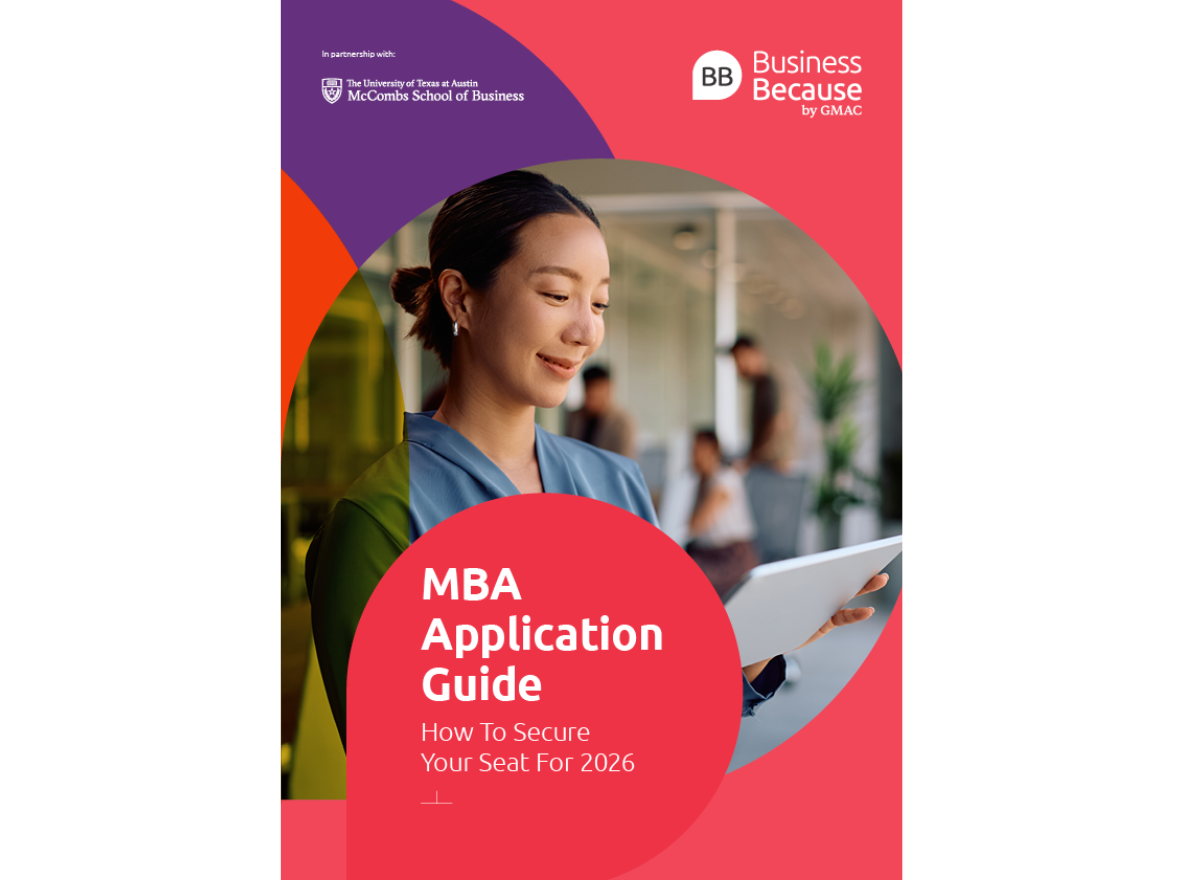It’s a well-known fact that the top MBA programs are competitive—but just how competitive are they?
We’ve researched the acceptance rates of the top 10 business schools in the world (according to the Financial Times Global MBA Ranking) to help you assess how good your chances are of being accepted.
We’ve used data collected by rankings providers such as US News & World Report, Forbes, and QS to put this list together.
Applying for a top MBA?
Download our MBA Application Guide
Top business schools with acceptance rates of below 20%
Overall, the average acceptance rate across the world’s top 10 business schools is 24%.
Of the top 10 schools in the Financial Times ranking, two had an acceptance rate of less than 20%: HEC Paris (18%) and MIT Sloan (14%). That means less than one in five applicants were accepted into each program.
It’s worth pointing out that HEC Paris and MIT Sloan aren’t actually the most competitive MBA programs in the world. Harvard Business School didn’t make the top 10 of the Financial Times ranking, but its MBA acceptance rate in 2023-24 was just 11.2%. And the most competitive MBA in the world is Stanford, with an acceptance rate that was even lower, at 6.8%.
However, don’t be put off by these figures. While MBA acceptance rates tend to be very competitive at the top schools—and are sometimes seen as an indicator of program demand and value—they don’t tell you about the quality of the candidates applying. A low acceptance rate may simply suggest that there were a lot of low-quality applicants.
And in the cases of Harvard and Stanford, they suggest that a low acceptance rate is a better indicator of a school’s prestige rather than the quality of its teaching or career outcomes.
To assess the quality of an MBA class, you’re better off looking at figures such as the class average GMAT scores, GMAT score ranges or post-graduation salaries. They’re a good measure of the academic records and professional achievements of MBA students at each business school. It's also a good idea to speak with students and alumni to get a feel for the class environment.
Top business schools with acceptance rates of below 30%
The acceptance rate at most of the other top business schools in the world outside the likes of Harvard and Stanford is between 20 and 30%.
Both London Business School and Esade Business School had an acceptance rate of exactly 20%. Wharton and Columbia were slightly higher, at 21%. But while LBS and Esade attracted 2,462 and 945 applicants respectively, Wharton and Columbia both received over 7,000 applications. This is fairly normal: American business schools tend to receive more applications than European schools in general.
The next most competitive schools were IESE Business School, with an acceptance rate of 26%, and Kellogg School of Management, with an acceptance rate of 29%.
Top business schools with acceptance rates of below 40%
Just two out of the top 10 business schools in the world have an acceptance rate of 30% or more. These were INSEAD (30%) in France/Singapore and SDA Bocconi (38%) in Italy.
INSEAD is notable for having the largest intake of any MBA program in the world. It admits around 1,000 students across its January and September classes every year. That’s in sharp contrast to SDA Bocconi, the smallest class on this list with just 143 admitted students.
Again, having a small or large intake isn’t necessarily an indicator of a program’s quality. INSEAD’s MBA intake is spread across two intakes and two campuses, which is why the class size is so large. And though SDA Bocconi only has a small class, it has been a fixture at the top of global MBA rankings for several years.
Which program you choose comes down to personal preference more than anything. Would you prefer a large MBA class drawn from all across the world, or a smaller cohort with a more intimate feel? It’s up to you.
MBA acceptance rates at the world's top 10 business schools
Are MBAs getting more competitive?
According to the GMAC Application Trends Survey, applications to business school increased by 12% in 2024. This increase, driven in part by a sluggish economy, was even bigger than the increase in applications we saw during the COVID-19 pandemic.
The survey found that this increase was largely driven by full-time, in-person programs. Also, schools ranked in the top 50 globally were more likely to see application growth than schools ranked outside of the top 50.
All of this would suggest that the 2025-26 application cycle may be the most competitive for a number of years. In 2023-24, the average acceptance rate across the world’s top 10 full-time MBA programs was 24%. We may well see that number decrease in 2025-26.
But again, it’s worth reiterating that acceptance rates aren’t necessarily a good indicator of the quality of a program. As we’ve discussed, they’re a better indicator of how prestigious and competitive a program is.
For more insider tips on how to ace the MBA application process, download our MBA Application Guide | How To Secure Your Seat For 2026



